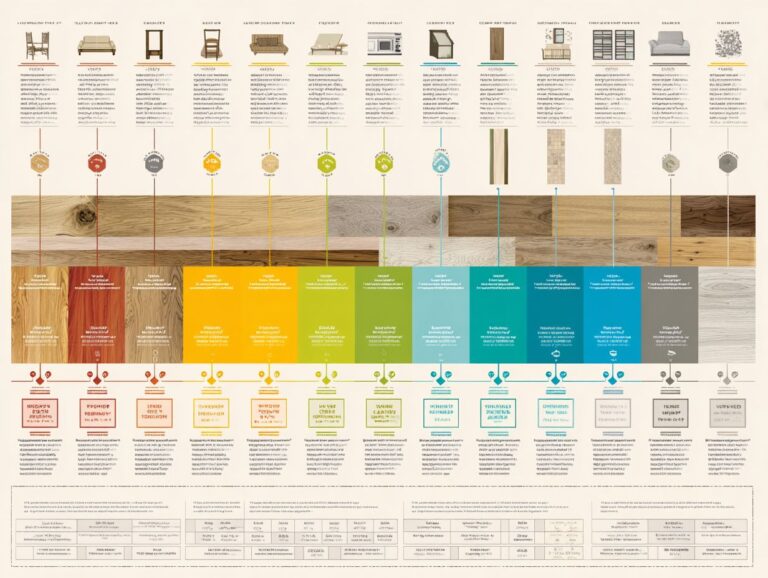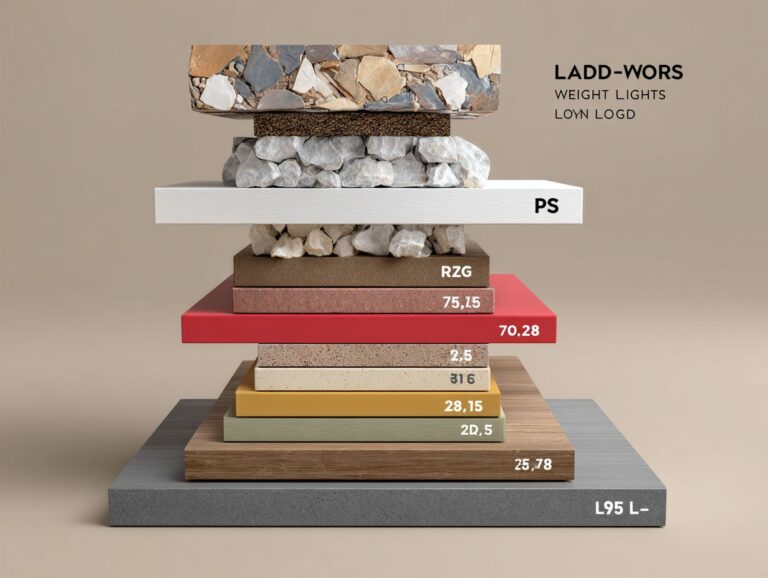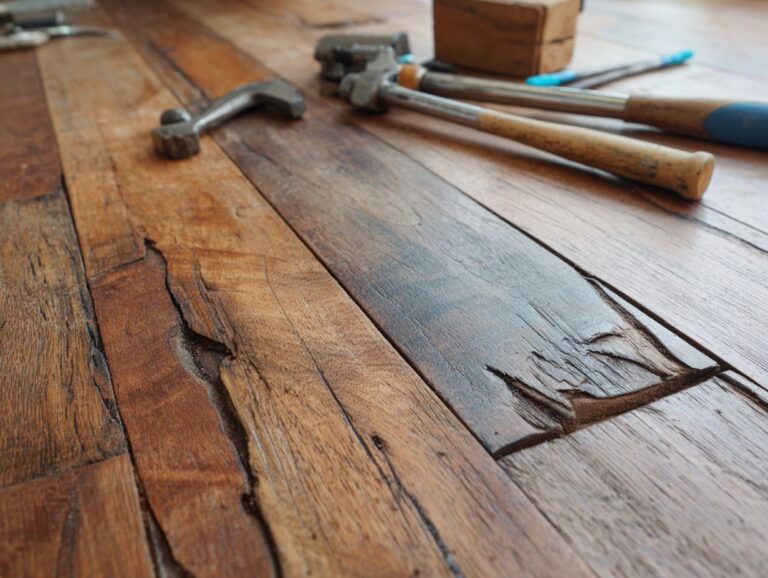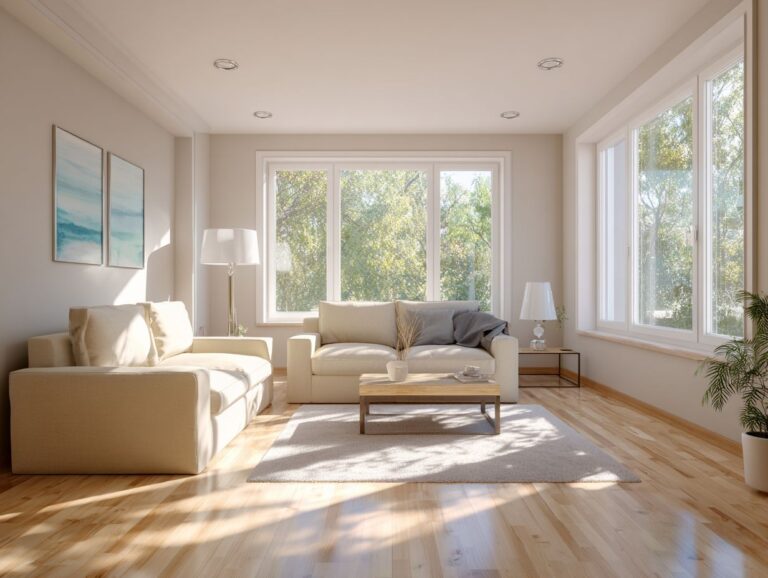Rubber Flooring Options – Residential and Commercial Uses
Rubber flooring is a great option if you want something that looks good and is also practical. Whether you’re setting up a restaurant kitchen or designing a lively gym, this strong flooring choice provides excellent durability and comfort. In this article, we’ll look at different rubber flooring choices for homes and businesses, pointing out installation advice and main advantages that make it a good purchase for any location.
Key Takeaways:
Contents
- Types of Rubber Flooring
- Residential Rubber Flooring Options
- Commercial Rubber Flooring Options
- Global Rubber Flooring Market Overview
- Installation Considerations
- Cost Analysis
- Frequently Asked Questions
- What are some advantages of using rubber flooring in residential and commercial spaces?
- Is rubber flooring suitable for use in both residential and commercial settings?
- What types of rubber flooring options are available for residential and commercial use?
- Are there any environmental benefits to using rubber flooring?
- Is rubber flooring suitable for high-traffic areas in commercial settings?
- What is the maintenance required for rubber flooring in residential and commercial spaces?
What is Rubber Flooring?
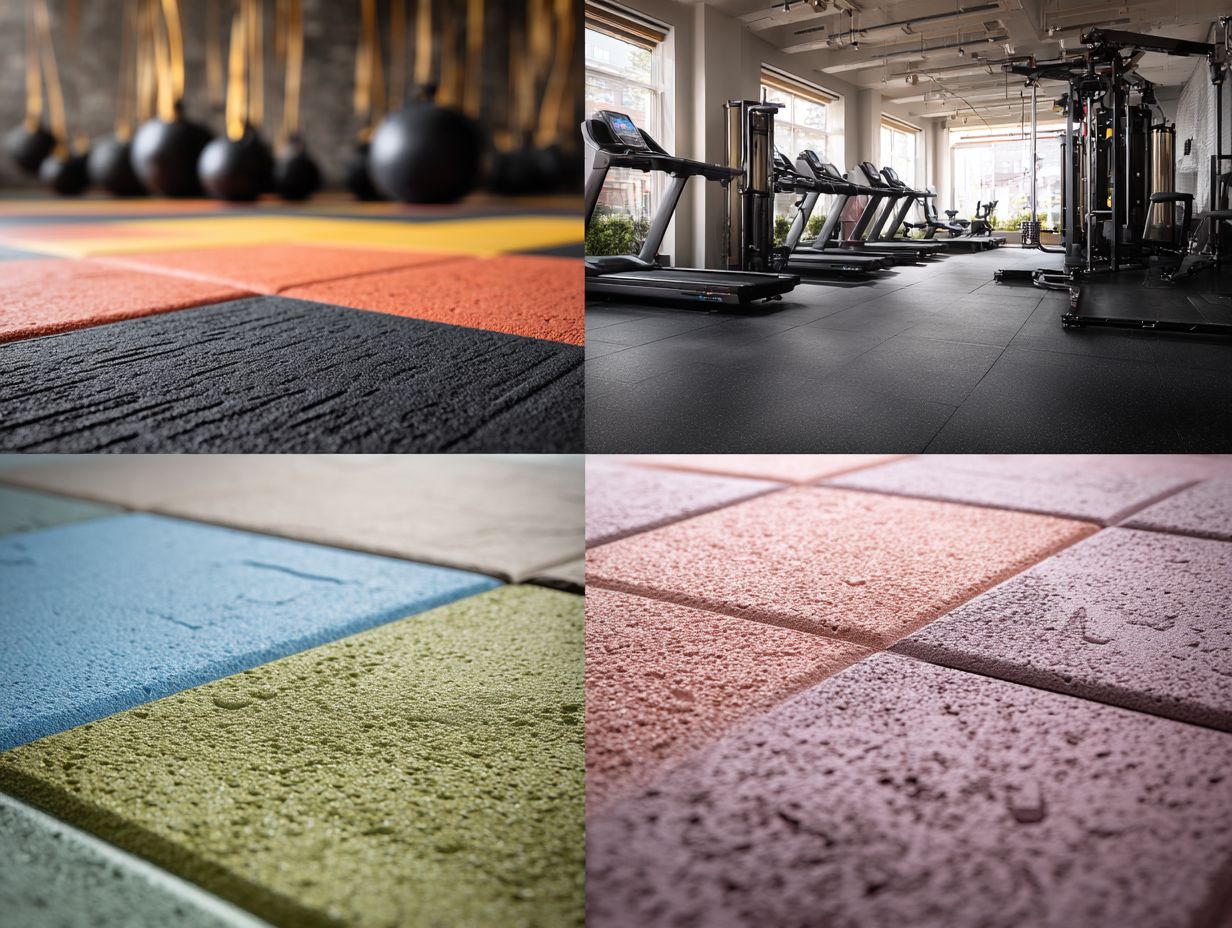
Rubber flooring is made from natural or synthetic rubber, providing a cushioned surface that is ideal for high foot traffic areas such as gyms and commercial kitchens.
Natural rubber comes from rubber trees and is highly elastic and long-lasting. This makes it a popular material for gyms.
Synthetic rubber, such as EPDM (ethylene propylene diene monomer), is often used in outdoor playgrounds due to its weather resistance.
Top producers like Mannington Commercial offer various choices that suit these areas, allowing for simple upkeep and improved safety.
When selecting rubber flooring, consider the intended use and environmental conditions to choose the best type for your needs.
Benefits of Rubber Flooring
Rubber flooring provides many advantages, such as reducing noise, preventing slips, and being environmentally friendly, which makes it popular for different settings.
First, its durability is impressive; rubber can last over 20 years with minimal wear.
Cleaning is easy-sweep each week and mop once in a while.
Feeling comfortable on the floor is important, particularly in busy places like gyms and playrooms, as it helps create a safer area.
Many rubber products use recycled materials, which are good for the environment and your health.
The design versatility allows for a range of colors and textures, fitting seamlessly into diverse interior styles-from commercial spaces to cozy homes.
Types of Rubber Flooring
Rubber flooring is available in different types, each with specific features designed for various uses, ranging from home to industrial environments.
Sheet Rubber Flooring
Sheet rubber flooring is a seamless choice, often used in busy areas like gyms and commercial kitchens because it is strong and long-lasting.
Available in various thicknesses, typically ranging from 1/8 inch to 1/2 inch, sheet rubber flooring provides a cushioned surface that reduces fatigue.
Installation methods include glue-down for permanent applications or loose lay for easier removal and maintenance. Its waterproof qualities make it ideal for areas prone to spills, ensuring safety and hygiene.
Common applications extend to fitness centers, healthcare facilities, and food service venues, where its slip-resistant and easy-to-clean features stand out.
Picking the right thickness for how often it will be used and how much stress it will endure can improve how well it works and how long it lasts.
Rubber Tiles
Rubber tiles provide a modular approach to flooring, allowing for easy installation and customization, ideal for residential and commercial spaces.
The interlocking designs of rubber tiles make them an excellent choice for DIY enthusiasts, as they require no special tools or adhesives.
Looking after them is simple; just regularly sweep and mop with mild soap to keep them looking clean.
The designs include a choice of plain colors and bright patterns to suit different tastes.
Popular manufacturers include:
- Eco-Flex, known for eco-friendly options
- Rubber-Cal, which offers diverse textures and thicknesses
Ensuring you find the perfect fit for your space.
Rubber Rolls
Rubber rolls can cover big areas seamlessly, which helps lower noise levels and makes walking more comfortable.
Their cost-effectiveness is apparent, as they can cover expansive spaces without the frequent seams found in tiles, reducing installation time and cost.
For optimal results, install rubber rolls on a smooth, dry surface using adhesive that suits your environment. Common settings include gyms and play areas due to their shock-absorbing properties, which protect floors and athletes alike.
Care should involve regular cleaning with a pH-neutral detergent to maintain traction and appearance, ensuring longevity and sustained performance in high-traffic areas.
Residential Rubber Flooring Options
Residential rubber flooring comes in many styles, suitable for different parts of the home, designed for both comfort and looks. Those interested in exploring diverse flooring options might appreciate learning about the benefits and installation of rigid core vinyl flooring.
Living Room Applications
Rubber flooring in living rooms provides a modern and useful surface that is easy to clean and comfortable to walk on, making it a good choice for families and pets.
Beyond practicality, rubber flooring comes in various styles and colors, allowing you to match it with your decor.
For a modern appearance, think about using smooth gray shades or striking black; these offer a stylish difference when paired with lighter furniture.
If you prefer a rustic style, warm and earthy colors can make your space feel cozy.
Brands like EcoSurfaces offer designs that look like wood or stone textures, fitting well in various places.
To maintain durability and aesthetic appeal, regularly clean with mild soap and water, ensuring your flooring lasts for years.
Kitchen and Dining Areas
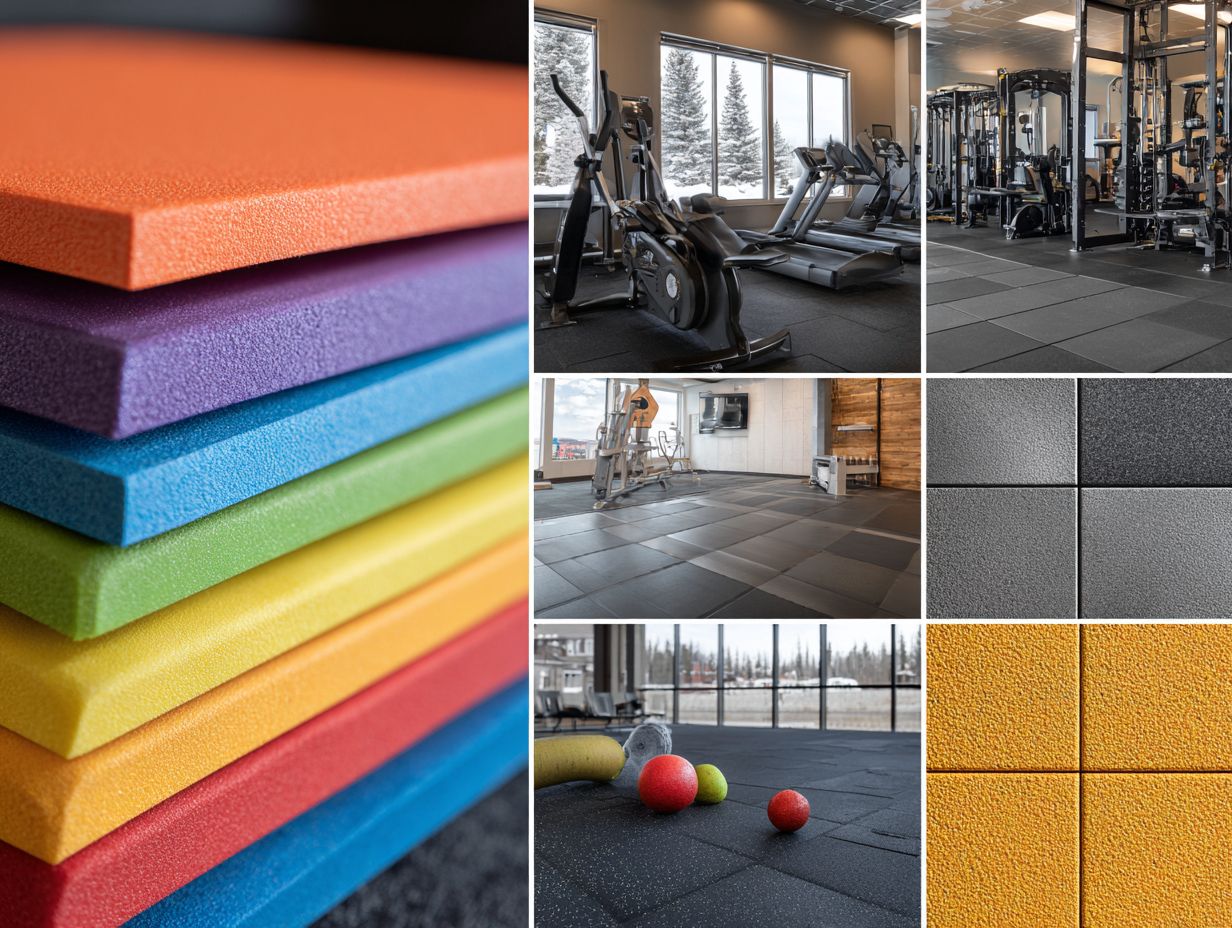
Rubber flooring is an ideal choice for kitchens and dining areas due to its moisture resistance and ease of cleaning, ensuring longevity and hygiene.
To maintain rubber flooring, start with regular sweeping to prevent debris buildup.
For deeper cleaning, use a pH-neutral cleaner mixed with warm water-this preserves the flooring’s integrity. Mix baking soda with water to make a paste, and rub it on stubborn stains using a soft cloth. Avoid harsh chemicals, which can damage the surface.
Cleaners like Armstrong Rubber Flooring Cleaner are made specifically for rubber flooring. They can improve how it looks and help it last longer.
Bathroom Use
Rubber flooring in bathrooms offers a waterproof surface that improves safety because it doesn’t slip easily, making it a good choice for areas with water.
This flooring also comes in a variety of colors and patterns that can complement any bathroom design.
For a modern aesthetic, consider sleek options like a solid slate gray or deep navy, both of which provide a sophisticated look.
Instead, use fun patterns like spotted designs in bright colors such as teal or mustard to give some character.
Rubber tiles can be arranged in creative layouts, enhancing visual interest while ensuring the safety and comfort of bathroom users.
Children’s Playrooms
Children’s playrooms benefit greatly from rubber flooring, as it provides a soft, shock-absorbent surface that protects kids during playtime.
Plus safety, rubber flooring offers comfort and is incredibly easy to maintain.
Products like the Eco-Flex play mats have 1-inch thick padding and come in bright colors and designs that attract young children.
For easy cleaning, choose interlocking tiles from brands like G Floor, which can be quickly wiped down and require no special detergents.
These flooring options are durable and can last over 20 years, making them ideal for high-traffic playrooms.
Commercial Rubber Flooring Options
Commercial rubber flooring options are made to handle the tough conditions found in places like hospitals, stores, and gyms.
Global Rubber Flooring Market Overview
To fully understand the differences in flooring options, it’s important to consider how vinyl choices compare. This approach has significant implications for content strategy- our detailed comparison between commercial and residential grade vinyl demonstrates the practical application.
Global Rubber Flooring Market Overview
Market Growth and Forecast: Market Size
Market Growth and Forecast: Growth Rate
The Global Rubber Flooring Market Overview shows how the market is expected to grow and develop, focusing on major increases between 2022 and 2032. The data illustrates the market’s value progression and anticipated compound annual growth rates (CAGR), underscoring the industry’s increasing relevance and demand driven by various factors such as the rise in construction activities, urbanization, and preference for durable, sustainable flooring solutions.
- Market Size: The market value in 2022 was recorded at $42.3 billion, indicative of a strong demand base. By 2031, the market is projected to reach $77.1 billion, showcasing substantial growth. Furthermore, an extraordinary leap to $1,960.21 billion by 2032 signals a dramatic expansion, suggesting that rubber flooring is becoming a significant player in the flooring industry, likely fueled by technological advancements and wider adoption across various sectors such as healthcare, education, and commercial spaces.
- Growth Rate: The CAGR from 2023 to 2031 is estimated at 6.9% The steady yearly increase is driven by new ideas and more uses for rubber flooring. From 2025 to 2032, the CAGR is slightly lower at 4.4%, still indicating steady growth. This slight reduction might be attributed to market stabilization or saturation as the adoption matures. The steady increase shows a strong market forecast.
The data suggests that the rubber flooring market is on a path of significant growth, with a strong market size projection for 2032 and consistent growth rates. This expansion is likely driven by a combination of factors including environmental benefits, versatility, and increased preference for eco-friendly building materials. Businesses and stakeholders in construction and design should review this information for planning and investing, tapping into the market’s opportunities for new ideas and meeting upcoming needs.
Office Spaces
Rubber flooring in offices makes it easier to walk and lowers sounds, making it a good choice for active work areas.
It provides different looks, including bright colors and stylish designs, to match different office styles.
For modern spaces, consider interlocking tiles like Nora Rubber Flooring, which allows for easy installation and customization. For a more classic look, check out Armstrong’s rubber floor sheets, available in wood or stone finishes. Both options promote a comfortable, slip-resistant surface that improves employee well-being.
Picking a product that matches your office’s style will create a welcoming and efficient environment.
Retail Environments
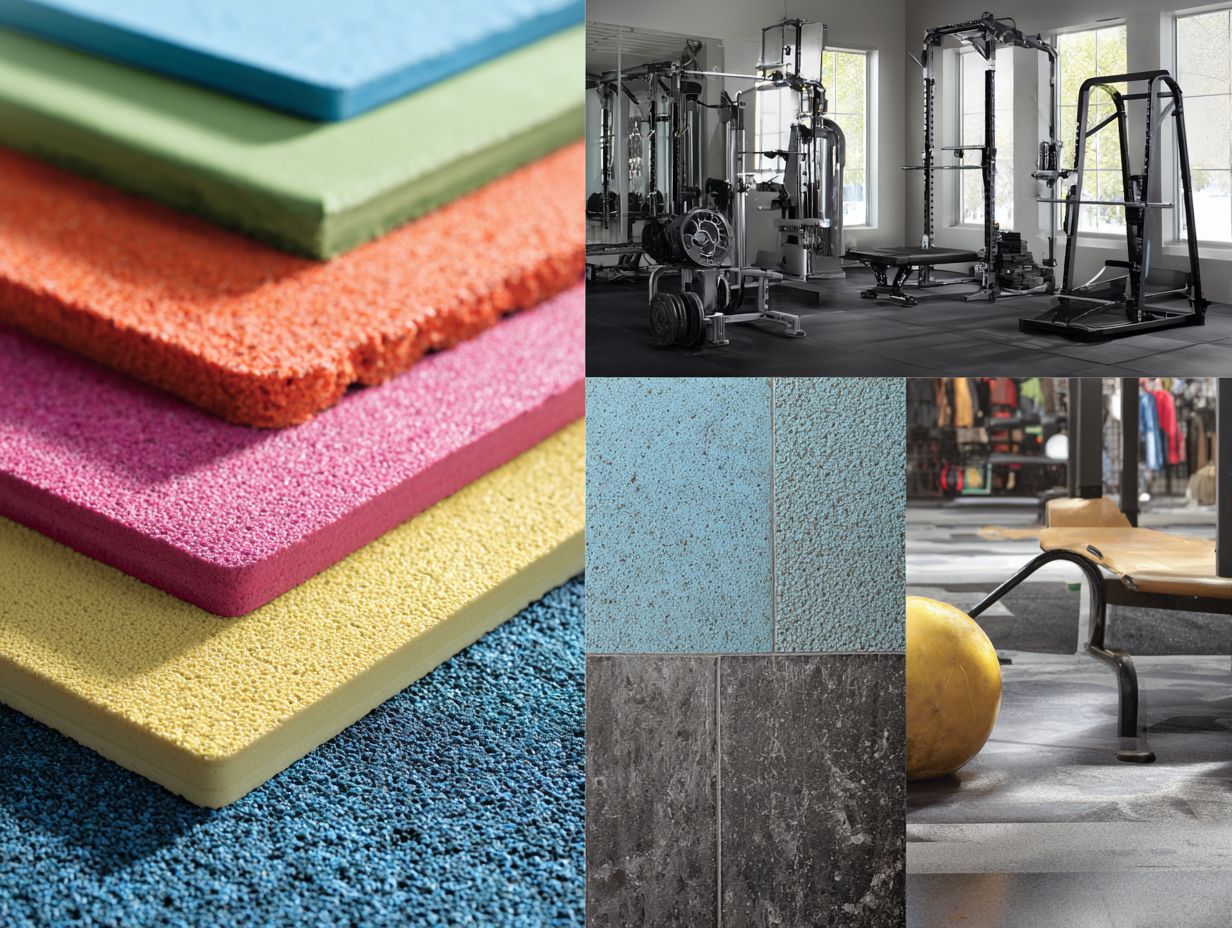
Retail environments benefit from rubber flooring due to its durability and attractive design options, fitting the needs of high foot traffic areas.
Choosing the right rubber flooring involves balancing aesthetics, maintenance, and customer experience.
For appearance, choose colors and patterns that fit your brand; for example, bright colors can make a room feel energetic, while gentle colors might make it feel calm.
It’s important to choose flooring that doesn’t stain easily and is simple to clean, especially in food stores.
For customer experience, make sure the flooring is slip-resistant and soft enough to lessen employee tiredness.
Researching options like commercial-grade rubber tiles or sheets will help identify the best fit for your environment.
Healthcare Facilities
Rubber flooring in healthcare buildings is important for safety and cleanliness, and it helps improve indoor air by releasing fewer harmful chemicals.
Healthcare environments demand flooring that is slip-resistant, easy to clean, and durable. Rubber flooring meets these criteria effectively. For instance, products like Johnsonite’s Rubber Flooring are designed specifically for healthcare settings, offering moisture resistance and sound absorption.
Another option is Nora Systems’ rubber tiles, known for their seam-free installation, which minimizes dirt accumulation. Both options contribute to a safer and more sanitary environment. They are durable enough to handle a lot of people and machines, which is important for hospitals and clinics with a lot of activity.
Gym and Fitness Centers
Gym and fitness centers require high-performance rubber flooring solutions that offer durability, shock absorption, and slip resistance for athlete safety.
When selecting rubber flooring, consider options like interlocking tiles, rolled rubber, and pour-in-place solutions.
-
Interlocking tiles are easy to put in place and swap out, making them great for spaces with different purposes.
-
Rolled rubber provides seamless coverage and is typically recommended for larger areas due to its cost-effectiveness.
-
Pour-in-place options, while more labor-intensive, offer superior durability and customization.
No matter the type, make sure to follow maintenance routines like cleaning often and resurfacing sometimes to keep your flooring in great shape.
Installation Considerations
Knowing what to consider during installation is important for getting the best outcome with rubber flooring, whether you decide to do it yourself or hire a professional.
DIY vs. Professional Installation
Deciding between DIY and professional installation for rubber flooring depends on your skills, budget, and the complexity of the project.
If you’re considering DIY, such as using interlocking tiles, you can save on labor costs, which typically range from $2 to $5 per square foot.
Make sure the subfloor is clean and dry before you begin. When hiring professionals, the cost usually includes both installing new flooring and possibly removing the old one.
Weigh the pros of cost savings and flexibility against the cons of time and effort required.
To improve your DIY projects, watch online tutorials and buy good tools like a utility knife and flooring roller.
Subfloor Preparation
Getting the subfloor ready is important for installing rubber flooring properly and making sure it lasts, as it greatly affects the end result.
To prepare your subfloor effectively, start by checking for moisture using a moisture meter, ensuring levels are below 12%. Next, thoroughly clean the surface to remove dirt and debris, using a vacuum or broom.
Level the subfloor with a self-leveling compound if necessary, filling any dips or cracks. For repairs, apply a patching compound to larger damages.
Essential tools for this process include:
- Moisture meter
- Vacuum
- Trowel for leveling compounds
- Bucket for mixing
Plan to allocate a few hours for this preparation to achieve the best results.
Maintenance and Care
Regular maintenance and care for rubber flooring extend its lifespan and maintain its aesthetic appeal, requiring specific cleaning methods and products.
For the best care, use neutral pH cleaners made for rubber flooring, like those from Armstrong or Rubberflooringinc.
Clean weekly to prevent buildup of dirt and grime, while deep cleaning should be done monthly using a damp mop and the appropriate cleaner.
Keep an eye out for common issues like fading or cracks, which can result from excessive exposure to sunlight. Quickly deal with marks by gently scrubbing and cleaning the area when needed to keep it looking good and lasting longer.
Cost Analysis
A cost analysis of rubber flooring shows both material and installation costs, helping consumers make informed choices. When comparing different flooring options, it’s useful to understand the key differences between commercial and residential grade vinyl, which can also impact cost decisions.
Material Costs
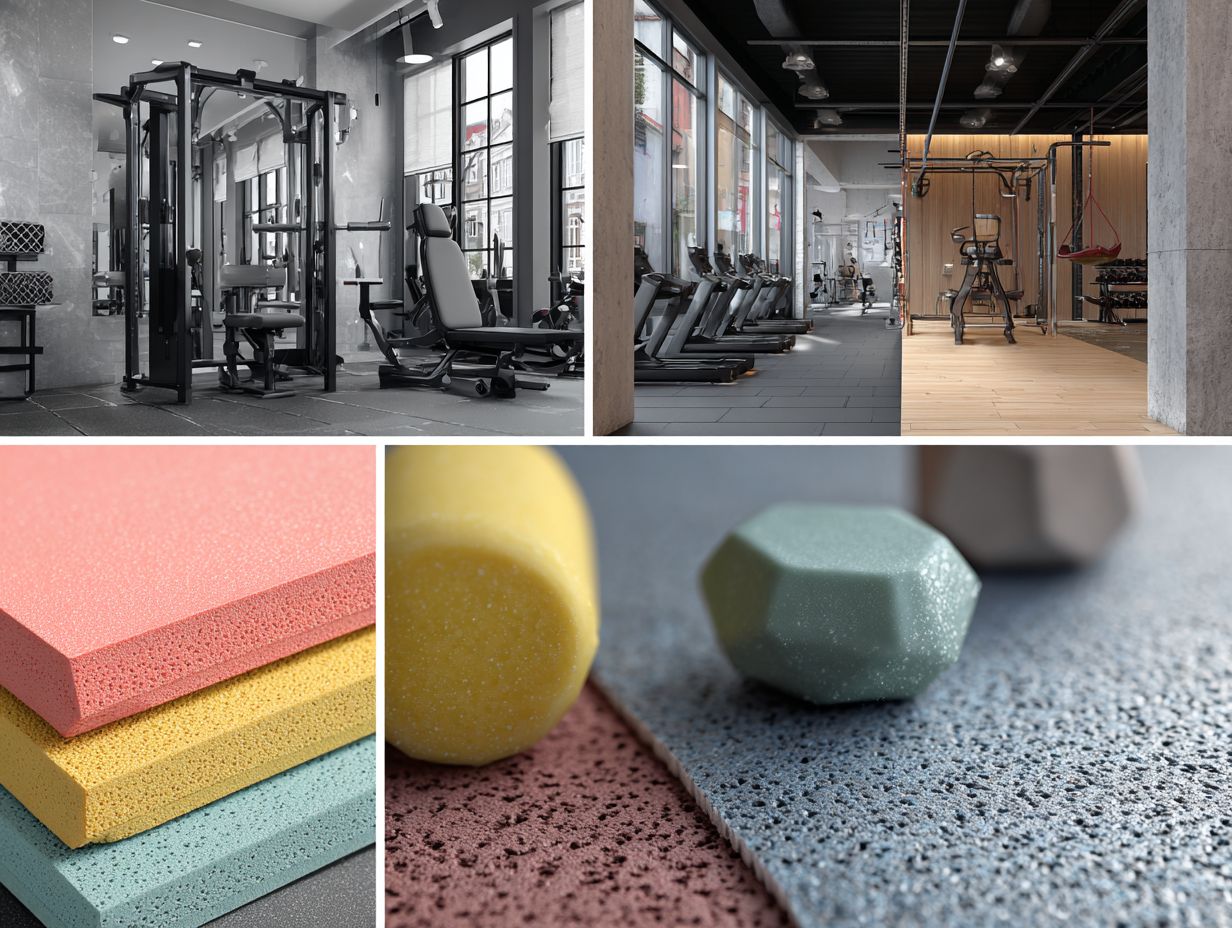
Material costs for rubber flooring can vary significantly based on the type and quality, typically ranging from $2 to $12 per square foot.
For example, rubber tiles generally cost between $4 and $8 per square foot and offer easy installation with interlocking designs. In contrast, rubber rolls range from $2 to $6 per square foot but may require professional help for installation due to their size.
Sheets are the most customizable and often run $6 to $12 per square foot, depending on the thickness and design. Suppliers like Amazon or local flooring stores often have promotions, so comparing prices at multiple retailers can save you money on your project.
Installation Costs
Installation costs for rubber flooring can range from $2 to $5 per square foot, depending on the method and complexity of the job.
Factors influencing these costs include subfloor conditions, with uneven surfaces potentially requiring additional leveling and preparation. For example, if the room has a cracked concrete slab, you might need to pay for repairs to make sure the installation goes smoothly.
Square footage also affects the total; for a standard 10×10 room, you might spend between $200 to $500. Ask different contractors for quotes to compare prices and quality for your project.
Frequently Asked Questions
What are some advantages of using rubber flooring in residential and commercial spaces?
Rubber flooring lasts a long time and handles lots of people walking on it, making it a good choice for busy places. It also provides sound insulation and is resistant to water, stains, and chemicals. Rubber flooring is simple to care for and available in many colors and patterns to match any design style.
Is rubber flooring suitable for use in both residential and commercial settings?
Rubber flooring works well in homes and businesses. It is commonly found in gyms, offices, schools, hospitals, and even in homes. Its durability and practicality make it suitable for a wide range of settings.
What types of rubber flooring options are available for residential and commercial use?
You can select from different kinds of rubber flooring, such as rolled rubber, interlocking tiles, and rubber mats. Rolled rubber is the most common and is suitable for large areas, while interlocking tiles and mats are easy to install and great for smaller spaces or specific areas.
Are there any environmental benefits to using rubber flooring?
Rubber flooring is produced using recycled materials, which makes it an environmentally friendly choice. It is also durable and long-lasting, reducing the need for frequent replacements, which can have a positive impact on the environment.
Is rubber flooring suitable for high-traffic areas in commercial settings?
Yes, rubber flooring can withstand heavy foot traffic and is an ideal choice for high-traffic areas in commercial settings. Its slip-resistant and shock-absorbing properties make it a safe and practical option for areas such as hallways, lobbies, and entrances.
What is the maintenance required for rubber flooring in residential and commercial spaces?
Rubber flooring is easy to maintain, requiring regular sweeping and occasional mopping with a mild detergent. It resists stains and water, so it requires little upkeep for homes and businesses. It is recommended to avoid using harsh chemicals or abrasive cleaners on rubber flooring.
